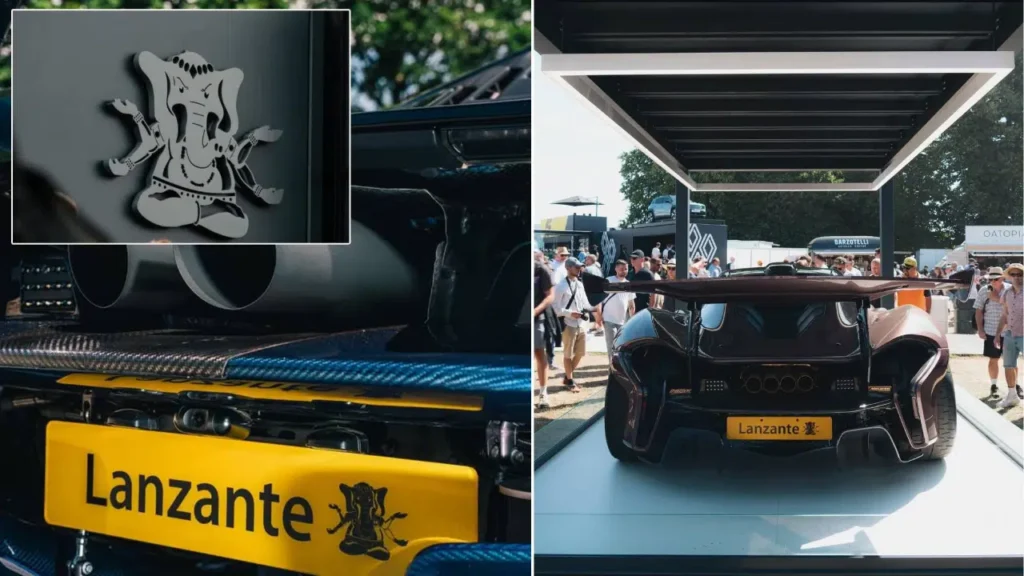At the Goodwood Festival of Speed, a British boutique carmaker unveiled a machine of raw horsepower and exquisite engineering. But what stunned the world wasn’t the engine, it was the emblem — Lord Ganesha, the Hindu deity of wisdom and new beginnings, now gracing the bonnet of a million-dollar hypercar.
A Logo That Crosses Borders
When Lanzante Limited, a niche British firm revered for restoring McLaren’s racing greats, chose to enter the hypercar market under its own name, it knew it needed more than speed to stand apart. The unveiling of the 95-59, its first three-seat supercar, did that and more.
On its hood gleams an image rarely associated with the high-octane world of motorsport: Lord Ganesha, remover of obstacles, a spiritual symbol deeply revered in India. The choice has set off a swirl of surprise, fascination, and pride across continents. In automotive circles, where branding is often dominated by predatory animals or abstract shapes, Lanzante’s embrace of a religious icon has no precedent.
Heritage, Music, and a Spiritual Thread
The design, Lanzante insiders say, was partly inspired by cultural bridges long in the making. The Beatles’ George Harrison famously carried an image of Ganesha as a talisman, linking British pop culture with Indian spirituality. Lanzante, steeped in motorsport’s past but determined to chart its own path, found resonance in the symbol’s meaning: clearing obstacles to new ventures.
For some, it is a respectful nod to India’s spiritual heritage at a moment when global luxury brands are increasingly seeking cultural authenticity. For others, it raises questions about the boundaries of religious iconography in consumer markets.
A Car of Numbers and Legends
The 95-59 is not merely symbolic. Its name recalls Lanzante’s triumph at the 1995 Le Mans, where it shepherded a McLaren F1 GTR to victory. The car itself is a feat of engineering:
- A carbon-fiber frame weighing about 2,700 pounds.
- A 4.0-liter twin-turbo V8, tuned to produce roughly 850 horsepower.
- A seven-speed dual-clutch gearbox delivering power to the rear wheels.
- A production run capped at 59 units, each expected to fetch well over $1 million.
The cockpit, arranged with three seats like the original McLaren F1, underscores Lanzante’s intent to marry heritage with innovation.
A Viral Moment, and Its Meaning
In India, images of the car quickly spread across social media with chants of “Ganpati Bappa Morya.” For many, it was a moment of cultural pride — a deity of wisdom and beginnings placed at the forefront of a global symbol of wealth and speed.
Yet the boldness of the move also sparked debate: does this represent reverence or commercialization? For now, the buzz has propelled Lanzante’s name far beyond the small but passionate circle of collectors who once knew it.
In a world where luxury brands often strain to find meaning beyond material excess, Lanzante may have discovered its answer in a centuries-old symbol of auspicious beginnings. Whether this fusion of spirituality and speed endures, only time — and the market — will decide.


